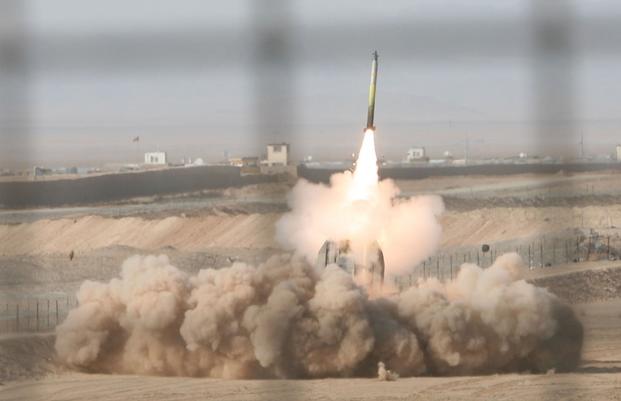The commandant of the Marine Corps wants Marine Corps ground units to be able to target enemy ships without having to rely on air support.
Gen. Robert Neller has been a champion of innovation since he assumed command of the Corps in 2015, promoting efforts to integrate drones with small infantry units and to get experimental technology into the hands of quick-learning Marines. A new focus, he revealed earlier this month at the U.S. Naval Institute's annual defense forum in Washington, D.C., involves finding a way to fire anti-ship cruise missiles out of existing Marine Corps artillery equipment.
"We’re looking at munitions and capabilities that can be fired out of existing things," he told reporters during the conference. "I would love to have an anti-ship cruise missile I could shoot out of a HIMARS launcher. So if the Marines, for example, were to go to seize and secure an advance expeditionary amphibious base and the adversary had ships, rather attack them with an airplane, I’d like to be able to have some way to defend from the shore."
HIMARS, an acronym for high-mobility artillery rocket system, is a vehicle-mounted light rocket launcher system used by the Army and the Marine Corps. It is somewhat portable, as it can be carried in a C-130 aircraft. The HIMARS is currently used for firing M270 artillery rockets and anti-aircraft missiles.
Neller said the Marine Corps and the Army were both looking at requirements to assess the feasibility of using the system to fire anti-ship ordnance as well.
"The Army’s looking at a lot of stuff and a lot of different type of capabilities that actually be fired from artillery, so I’m not going to get into that," he said. "...We just need to make sure that we can continue to be able to invest in [research and development], and when we find something, that we can figure out a way to field it a little bit faster."
Neller would also like to see Tomahawk missiles aboard amphibious assault ships, which carry Marines across the globe, he said at the conference.
"Imagine that the big deck amphibs have F-35Bs that can hold any target at risk," he said, referring to the new joint strike fighter aircraft. "Imagine that the [vertical launching system] space on LPD-17 actually has Tomahawk missiles."
LPD-17, the USS San Antonio, is the lead ship of the class of amphibious transport dock, an element of the three-ship amphibious ready group aboard which Marine expeditionary units deploy.
"There’s a VLS cell on every LPD; we just don’t put any missiles on there," he said. "Those forces are not just out there doing amphib stuff, but they’re a part of doing maritime domain operations, shaping the environment, fighting the naval campaign, along with the carriers, service action groups, submarines, maritime aircraft."
Tomahawks were most recently deployed from the destroyer USS Nitze in a retaliatory strike on radar sites on the coast of Yemen in October in response to missiles launched from those sites that targeted those ships.
Neller said the chief of Naval Operations, Adm. John Richardson, was also interested in adding cruise missile capability onto amphibious ships.
"That’s the capability we want to be able to provide to the nation, no matter the number of ships there are," he said.










